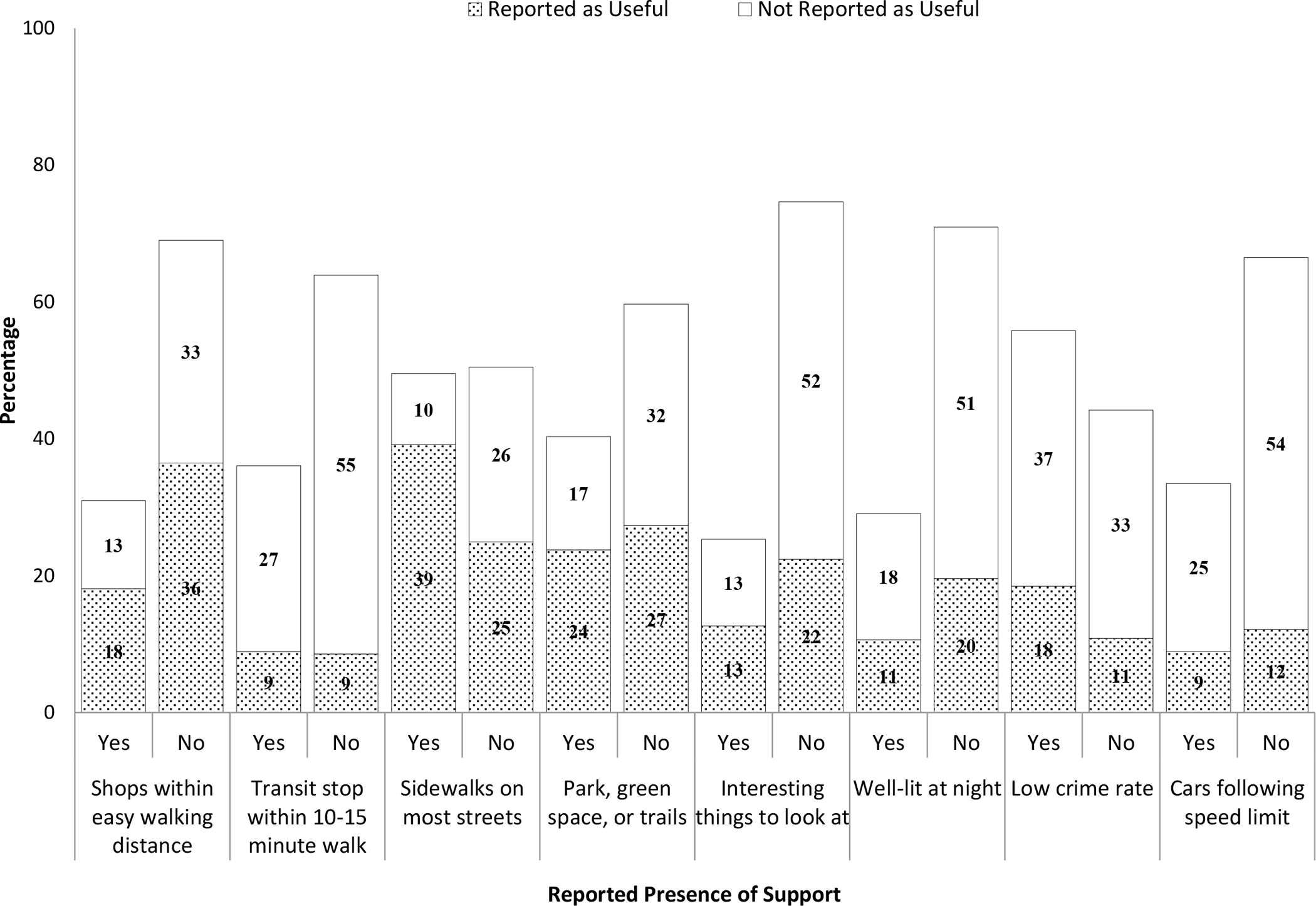Figure 1.

Percentage of US Adults Reporting Presence and Usefulness of Neighborhood Supports for Walking, SummerStyles Survey, 2014.
Adults who indicated that they were unable to walk when asked how often they usually walk for at least 10 minutes at a time were excluded. A neighborhood support was categorized as present if the respondents selected it when asked to identify which (if any) were true about their neighborhood: many shops, stores, markets, or other places to buy things within easy walking distance; transit stop within a 10–15 minute walk; sidewalks on most of the streets; parks, green spaces, or trails for walking; low crime rate; many interesting things to look at while walking; safe because many drivers follow the posted speed limits, and well-lit at night. For supports identified as present, respondents were asked to select which (if any) they currently use or do because the support is present. For supports not identified as present, they were asked to select which (if any) they would use or do if the support was available. A support was categorized as useful if it was selected during either follow-up question.
